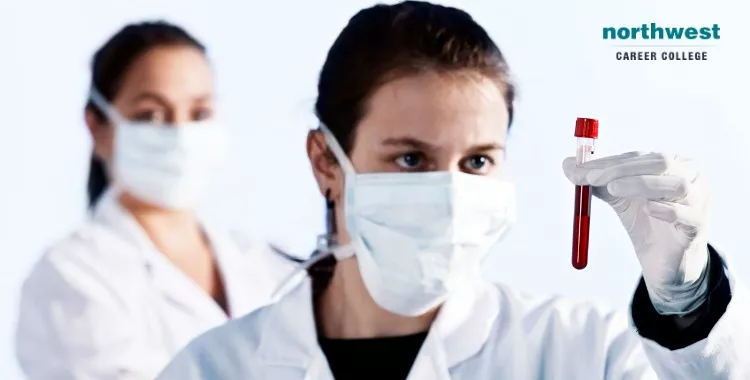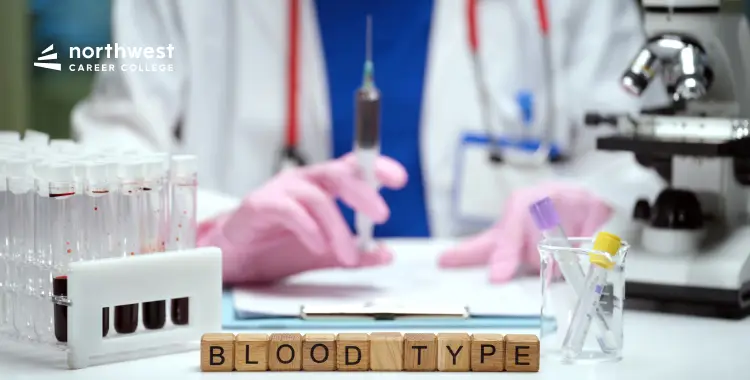What Is The Purpose Of Phlebotomy?
- March 12, 2024
- 7.8k views
- 6 min read
Phlebotomy is the process of drawing blood from a patient’s vein. It is an important medical procedure that helps to collect blood samples for testing or transfusion.
Phlebotomists are specially trained medical professionals who are skilled in performing this procedure, and the study of phlebotomy is an excellent way to enter the medical field. In this article, we will discuss the importance of phlebotomy and how it is used in both diagnostic and therapeutic settings.
Read More: Why Would a Patient Need Phlebotomy?

Table of Contents
- Phlebotomy is the process of drawing blood from a patient for medical testing, transfusions, or donations.
- It is a vital part of the healthcare system, as it helps to diagnose and treat many different conditions.
- There are many different types of phlebotomy, each with its own purpose.
- The most common type of phlebotomy is venipuncture, which is used to collect blood samples for laboratory testing.
- Other types of phlebotomy include arterial puncture, capillary puncture, and finger stick puncture.
- Phlebotomists must be trained in proper techniques in order to minimize the risk of infection or other complications.
- Become a phlebotomist today
- Start your new career today
Phlebotomy is the process of drawing blood from a patient for medical testing, transfusions, or donations.
Phlebotomy is an important area of health care, for both diagnostic and therapeutic purposes.
Trained professionals utilize various methods to obtain blood samples from patients in order to diagnose and manage diseases, cause treatments to be more effective, assess donor compatibility for blood transfusions, and determine the suitability of donors for organ or tissue donation.
It requires precise technique and knowledge, as mistakes can cause patients inconvenience and even harm them. In addition to using clinical safety protocols such as asepsis, accurate labeling of samples, correct patient identification, and maintenance of a sterile environment throughout the procedure must also be ensured.
Ultimately it is important that phlebotomists remain aware of their responsibilities, given the sensitive nature of their job.
It is a vital part of the healthcare system, as it helps to diagnose and treat many different conditions.
Magnetic Resonance Imaging (MRI) is an essential element of the global healthcare system, contributing to both the diagnosis and treatment of a wide range of health issues. It is a type of imaging test that allows medical professionals to see subtle differences in internal structures and bodily systems, allowing them to identify diseases and abnormalities with detailed accuracy.
MRI scans have no harmful effects on patients, making them preferable for diagnosing children and pregnant women. Furthermore, MRI can also be used in interventional procedures, such as biopsy sampling or guiding radiation therapy treatments.
As the technology evolves and develops further, MRI usage continues to expand, offering more precise and delicate diagnoses than ever before.
There are many different types of phlebotomy, each with its own purpose.
Phlebotomy is the process of collecting blood from patients or donors for various types of medical testing. It is an essential part of health care, and its importance cannot be overstated.
There are a variety of different forms of phlebotomy, including venous phlebotomy, fingerstick, and arterial puncture.
Venous phlebotomy involves drawing a specimen directly from the patient’s veins, which can then be used in laboratory tests to diagnose diseases or monitor medications.
Fingerstick is a painless procedure that requires a lancet to prick the skin on the fingertip and collect drops of blood onto a test strip.
Finally, arterial puncture entails taking larger samples, usually used when taking arterial blood gasses. Each type has an important role to play in providing quality health care and will be invaluable as medical technology continues to evolve.
The most common type of phlebotomy is venipuncture, which is used to collect blood samples for laboratory testing.
Venipuncture is the term used to describe the more common type of phlebotomy, where a needle is inserted into a vein in order to draw blood samples. This process is essential for laboratory testing, providing critical data on health conditions, disease monitoring, and blood test results.
Venipuncture requires skill and precision, as veins can be difficult to locate at times. It also requires knowledge of safety procedures to ensure patient safety during the process. The popularity of venipuncture is due to its reliability and accuracy in collecting medical-grade blood samples used for laboratory testing and research.
Other types of phlebotomy include arterial puncture, capillary puncture, and finger stick puncture.
Phlebotomy is not always conducted in the same way. Depending on the patient’s individual requirements, as well as the location of the specimen collection, different phlebotomy techniques may be used.
Arterial puncture involves collecting blood from an artery by entering it with a needle or through a small incision. Capillary puncture is done by piercing the skin over a capillary bed and drawing blood directly into a vacutainer. Fingerstick puncture is a noninvasive method that obtains several drops of blood from the fingertip using lancets and micro collection devices.
All three methods are accepted forms of collecting specimens in clinical laboratories across the United States.
Phlebotomists must be trained in proper techniques in order to minimize the risk of infection or other complications.
Becoming a phlebotomist requires extensive training in order to be able to properly draw blood samples with minimal risk of infection. For example, each sample should be taken with a sterile needle and handled with a gloved hand during collection.
The phlebotomist must also practice proper safety precautions, such as using a tourniquet, stainless steel tray, and other necessary supplies. In addition to collecting samples correctly, it is essential that the phlebotomist has knowledge of proper documentation processes in order to ensure all information related to the sample is accurate and complete.
Therefore, it is clear that becoming a competent and successful phlebotomist entails mastering multiple skills and following strict protocols throughout the process.
Become a phlebotomist today
Phlebotomy is a vital part of the healthcare system, as it helps to diagnose and treat many different conditions. There are many different types of phlebotomy, each with its own purpose.
The most common type of phlebotomy is venipuncture, which is used to collect blood samples for laboratory testing. Other types of phlebotomy include arterial puncture, capillary puncture, and finger stick puncture.
Phlebotomists must be trained in proper techniques in order to minimize the risk of infection or other complications. If you’re interested in becoming a phlebotomist, contact Northwest Career College to talk about our Phlebotomy Program.
Start your new career today
At Northwest Career College, we pride ourselves on providing one of the premier Phlebotomy Schools in Las Vegas.
Our established and seasoned instructors will take you through every aspect of Phlebotomy and Northwest offers day, afternoon, and night classes to accommodate your busy Las Vegas work and family schedule.
Call us today at (702) 403-1592 to speak to one of our admissions specialists about your new Phlebotomy career.





